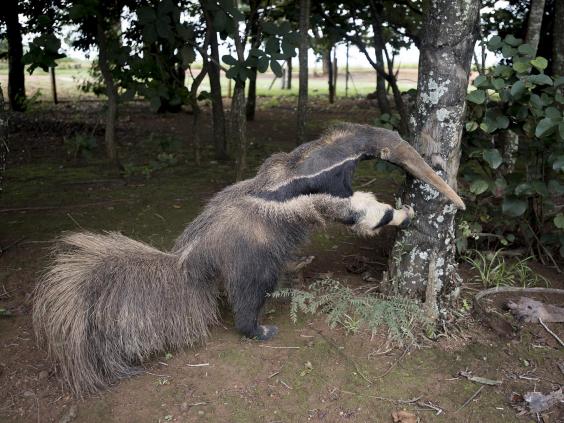 Marcio Cabral’s photo of an anteater beside a termite mound glowing with click beetles is a real stunner — at first glance at least. Indeed, it so impressed judges of the Wildlife Photographer of the Year contest that they awarded Cabral top prize in the Animals in their Environment category.
Marcio Cabral’s photo of an anteater beside a termite mound glowing with click beetles is a real stunner — at first glance at least. Indeed, it so impressed judges of the Wildlife Photographer of the Year contest that they awarded Cabral top prize in the Animals in their Environment category.
But having received tip-offs from the public, the U.K.’s Natural History Museum, which runs the competition, has decided to strip the photographer of his award. Why? Because, it says, the animal is stuffed.

The museum this week pointed out what we could’ve already guessed — that using a stuffed animal in an image for its photography contest is a breach of the rules.
An assessment by scientists who examined the shot concluded that Cabral photographed a (dead and stuffed) anteater that’s on display at the entrance to Brazil’s Emas National Park — the same place where he took his shot.
“Five scientists, working independently of each other, all concluded that there are elements of the animal’s posture, morphology, raised tufts of fur, and patterns on the neck and head that are too similar for the images to show two different animals,” a museum spokesperson said.
But Cabral insists the animal was very much alive when he took the shot.
When he submitted the photo, he said he’d spent three years waiting for the perfect moment to capture an anteater approaching the glowing termite mound.
Cabral told the BBC that as there were other photographers and tourists in the park when he was there, someone would surely have seen him carrying the anteater away from the entrance.
According to the Guardian, Cabral’s original caption for the photo described how he endured days of rain in the national park when a “giant anteater ambled out of the darkness” and stayed “just long enough” for him to capture what he hoped would be an award-winning image. Which it was … for a while, anyway.
Cabral supplied others images from the same shoot to the investigators, but none of them showed the anteater. “Unfortunately, I do not have another image of the animal because it is a long exposure of 30 seconds and ISO 5000,” Cabral told the BBC. He also offered a witness who he said was with him at the time, but the investigators were having none of it.
“This disqualification should remind entrants that any transgression of the rules and spirit of the competition will eventually be found out,” said Roz Kidman Cox, the chair of judges for the Wildlife Photographer of the Year contest.
Despite Cabral’s insistence that the anteater is real, Cox said she found it “disheartening and surprising that a photographer would go to such lengths to deceive the competition and its worldwide following.”
She added: “The competition places great store on honesty and integrity, and such a breach of the rules is disrespectful to the wildlife-photography community, which is at the heart of the competition.”
Cabral’s photo had been on show for the last six months as part of a paid exhibition at the Natural History Museum, but it was removed from the gallery this week.
But take note. Some photographer’s have been praised for their work with stuffed animals. Take Martin Usborne, whose famous images featuring a stuffed fox in everyday situations in London won him much praise from photography fans around the world.


